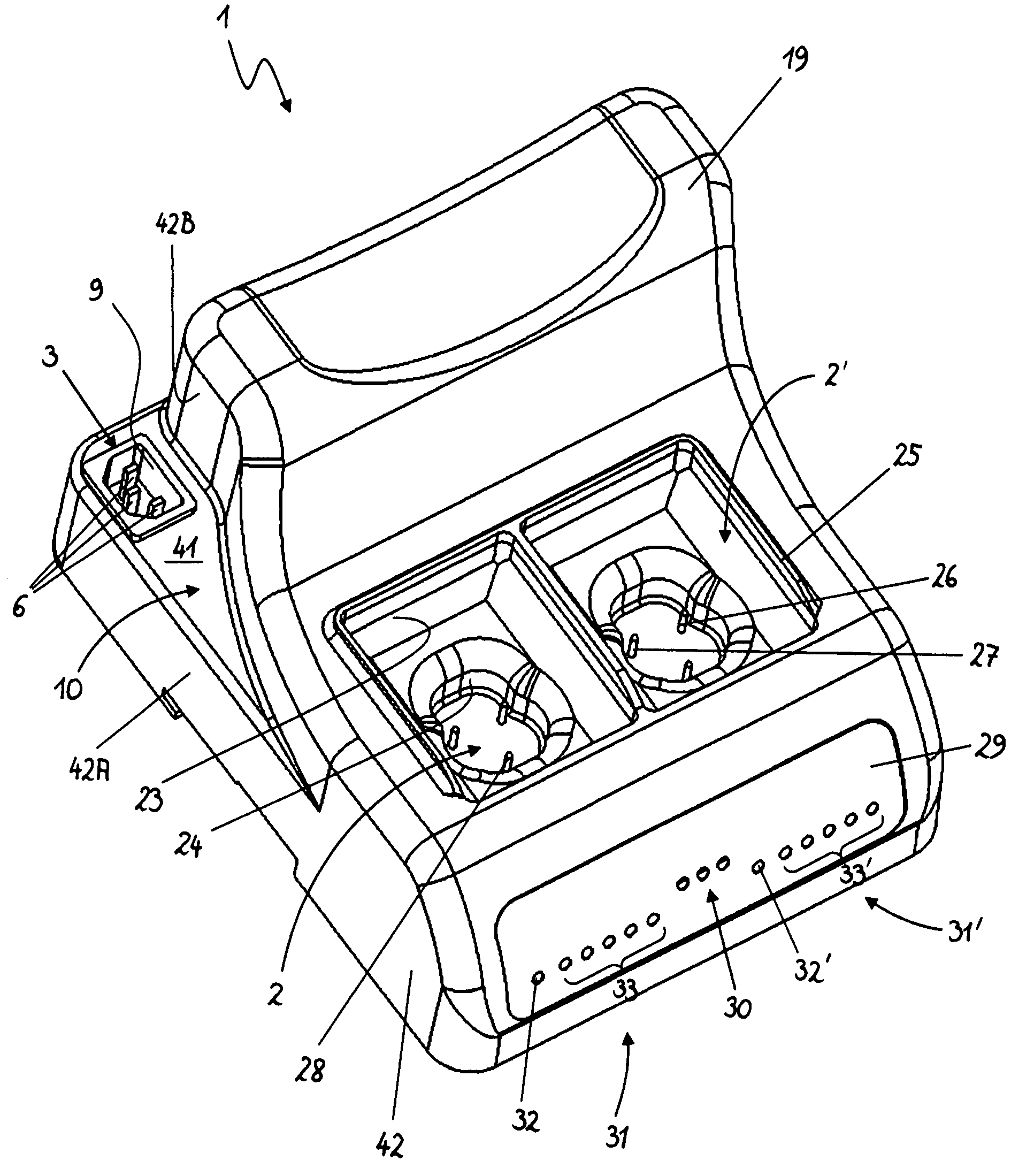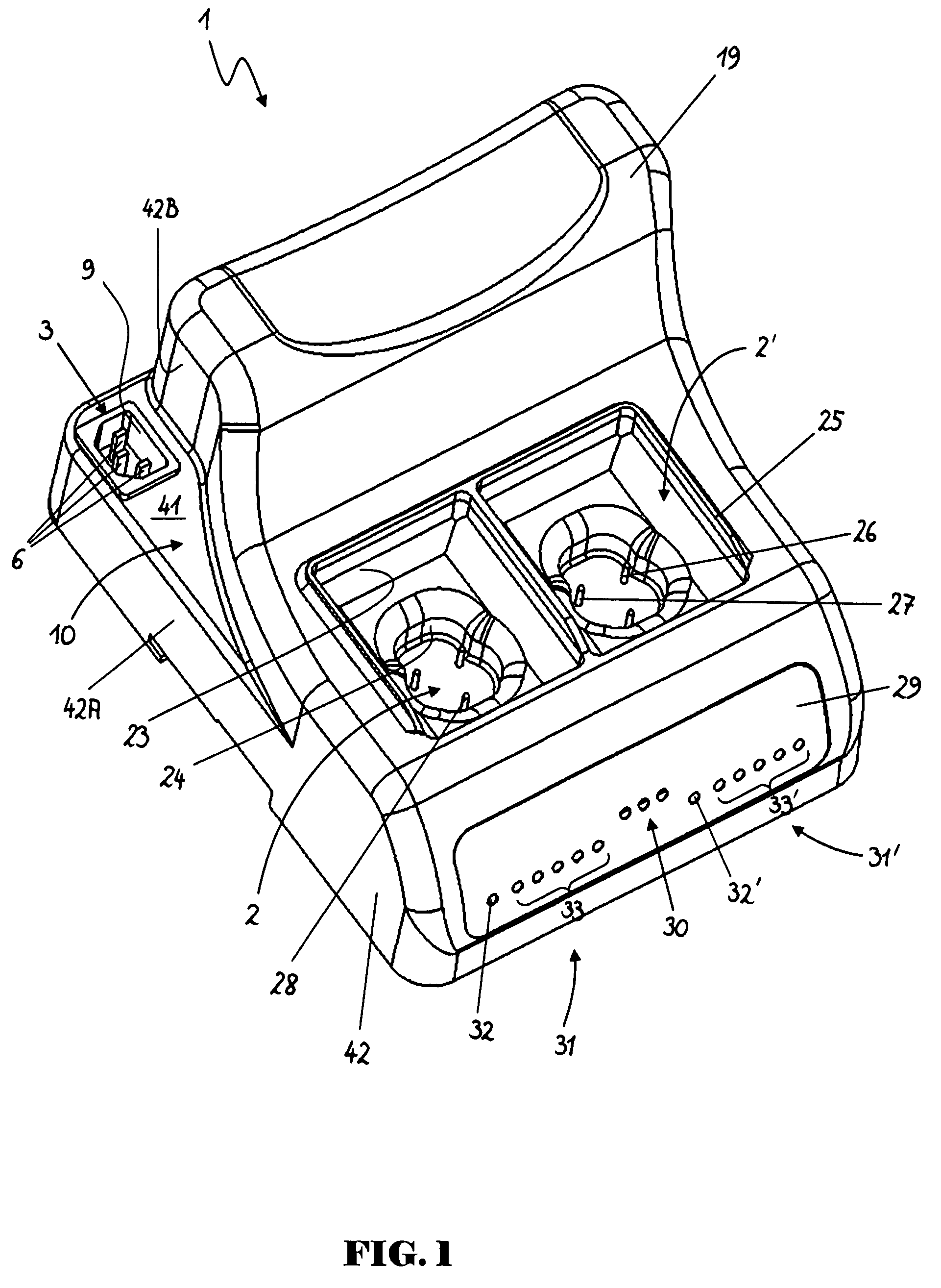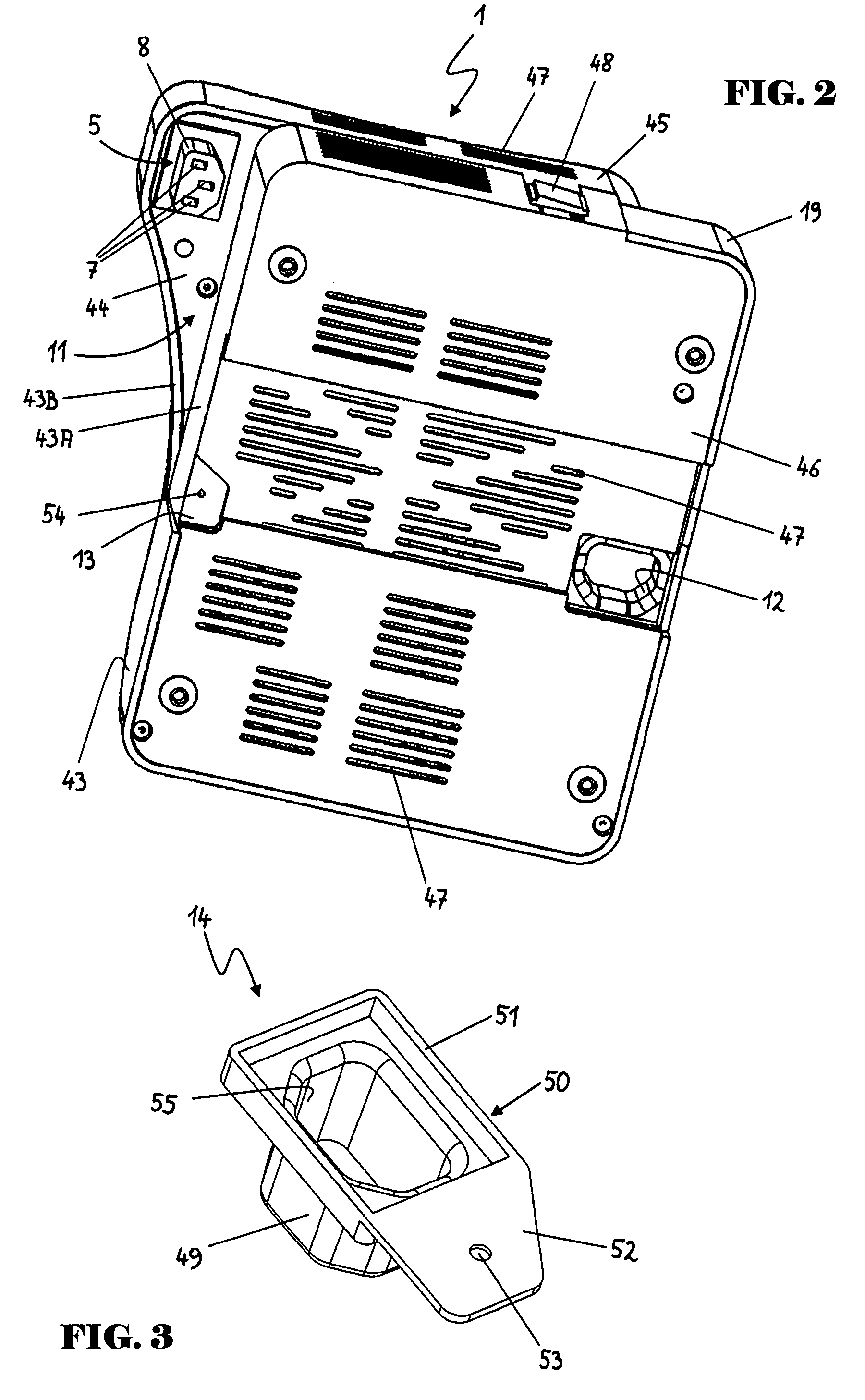Device for charging batteries
a battery and charging device technology, applied in the field of charging devices, can solve the problems of inability to recognize battery types at all, inability to identify magnetic elements of batteries in a way that might influence the components of handheld devices in an unwanted manner, and achieves simple circuit, good resistance to high temperatures, and extreme resistance to soiling.
- Summary
- Abstract
- Description
- Claims
- Application Information
AI Technical Summary
Benefits of technology
Problems solved by technology
Method used
Image
Examples
Embodiment Construction
[0027]FIG. 1 shows a charger 1 having an outside housing 19 in which two electric contact devices 2, 2′ are arranged. The number of contact devices 2, 2′ is shown merely as an example, so the charger may of course also have only one or more than two contact devices. Each of the two contact devices 2, 2′ comprises a first recess 23 and a second recess 24, each in the form of an offset, which may have different diameters and shapes. Due to these different shapes, batteries with different outside shapes may be connected to the charger 1 and charged there. Recess 23 has essentially a rectangular shape, while recess 24 has a rounded, essentially oval shape. Recess 24 is arranged in recess 23 so that the contact devices 2, 2′ have a stepped design. A narrow web 25 surrounds three sides of each of the two contact devices 2, 2′.
[0028]FIG. 5 shows an example of a battery or an accumulator that can be charged with this charger 1. The battery 100 comprises a housing 95, which is preferably mad...
PUM
| Property | Measurement | Unit |
|---|---|---|
| distance | aaaaa | aaaaa |
| distance | aaaaa | aaaaa |
| distance | aaaaa | aaaaa |
Abstract
Description
Claims
Application Information
 Login to View More
Login to View More - R&D
- Intellectual Property
- Life Sciences
- Materials
- Tech Scout
- Unparalleled Data Quality
- Higher Quality Content
- 60% Fewer Hallucinations
Browse by: Latest US Patents, China's latest patents, Technical Efficacy Thesaurus, Application Domain, Technology Topic, Popular Technical Reports.
© 2025 PatSnap. All rights reserved.Legal|Privacy policy|Modern Slavery Act Transparency Statement|Sitemap|About US| Contact US: help@patsnap.com



